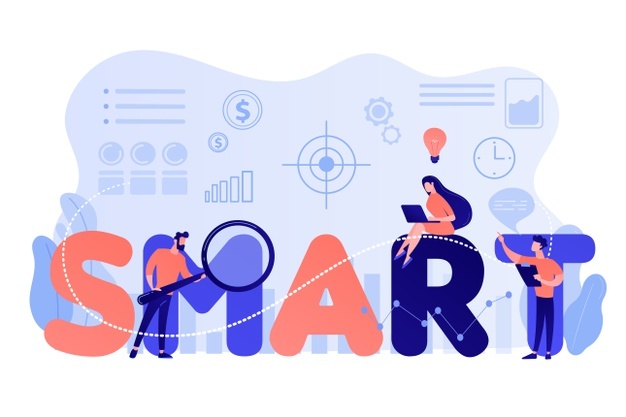
While an IEP provides a holistic approach and framework for the student with special needs to progress in class, it is equally necessary for the IEP team (parents, teachers, therapists, advocates) to jog down their memory and plan smartly the goal-setting process! Today in this article we will have a sneak peek of the SMART Goal setting in IEPs and what is the importance of it.
What is a SMART Goal?
Goal setting is extremely important for planning and processing an IEP and gives a sense of focus, motivation and direction to the team as well as the student. Be it short or long term, SMART goal setting helps in achieving clarity and work better to enable inclusion in the classroom activities. SMART is the acronym for Specific, Measurable, Achievable, Realistic and Timely.
To break it down, SMART goal setting for an IEP are:
- Specific: Clear, focused, unambiguous
- Measurable: With a specific limit in mind that measures the child’s progress towards the accomplishment of their goals
- Achievable: Attainable and not impossible to acquire
- Realistic: Relevant, possible to obtain and within reach for the child
- Timely: Clear stated timelines, with a precise start and end date
SMART Goal-Specific
In order to help the student achieve their goals effectively we need to create “specific” goals answering the 5 “W” questions:
- Who: Who all are involved in this goal planning?
- What: What do we want the child to accomplish?
- Where: Where do we want the goal to be achieved?
- When: When do we want to finish achieving this goal?
- Why: Why do we want the child to achieve this goal?
For example, a general goal would be “ The student should achieve x% in math”. A more specific goal would be “The student needs to work “a” number of hours on this exercise on 3 days a week to obtain x% in math”.
SMART Goal-Measurable
Measuring the progress of the student is crucial to reach their goals on time. If there is no criteria it will be impossible to reach the goal in spite of using the IEP diligently. To make goals measurable for the student it is important to ask the following questions:
- What is the child’s progress indicator?
- How do you know if the child has reached their goal?
- How many goals?
For example, “The student should be able to complete 5 exercises in 5 days consecutively to get x% in math”
SMART Goal-Achievable
Attainable,realistic and achievable goals are important for the student to work towards. The achievability of the goal should be stretched enough to make them feel challenged, but also well-defined and precise to make them believe that they can actually achieve it with the right support from the team. Ask the students:
- Do you have the support, resources, capabilities to achieve the goal? If not, then what can you do to help them out in this case?
- Is this easily replicable in other IEPs and has it worked out before?
SMART Goal-Realistic
Realistic and relevant goals are important so that it can be achieved with the right resources and time. In the IEP it is crucial to include pointers for the child like:
- Is the goal realistic and within reach, or it seems unrealistic for the child to achieve?
- Is the goal reachable with the provided time and resources?
- Will the child be able to commit to achieving the goal?
SMART Goal-Timely
Timelines are very important for SMART goals to work out. It should have a definitive start and finish date otherwise there will be no sense of urgency and lack of motivation to achieve a particular goal within an appropriate time frame. Including questions like the following in the IEP will be helpful:
- Do short term and long term goals have a deadline?
- By when do you want the student to achieve their goals?
For example, building on the goal above: On March 1st, the student should start working on exercises 1-5 for 5 consecutive days. This should be done to keep a constant practice on and revisions are needed every 2 days. Every week the student should aim to finish 1 module. By the end of March, the student would have realised their goal if they obtain x% in math.
Importance of SMART Goal Setting:
Being organized in setting goals in the IEP will give a sense of direction, accomplishment and help the team organize and prioritize tasks at hand for the student. Having a specific, measurable, achievable, realistic and timely outlook towards goal setting will ensure that the child reaches all his milestones within the timelines set with the required dedication and effort. Watch this space to understand and learn more about IEPs and what we recommend as the best practices for making a successful IEP.




You must be logged in to post a comment.